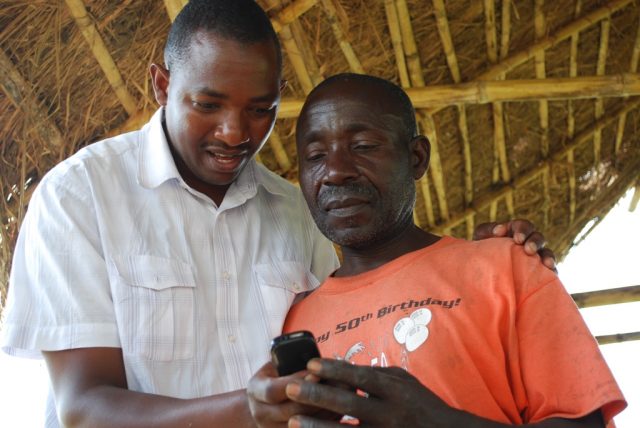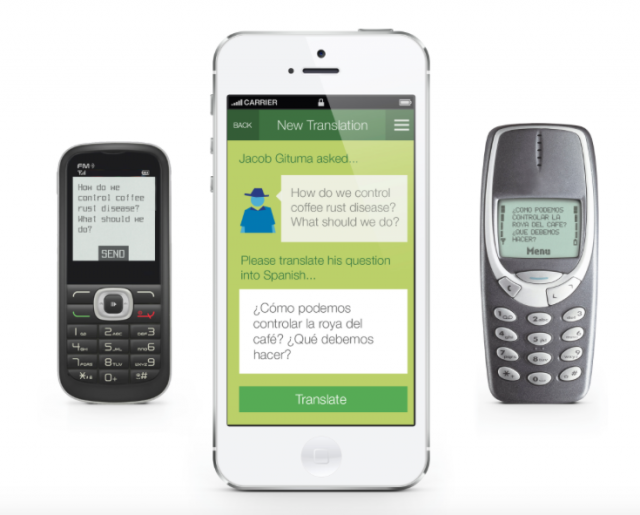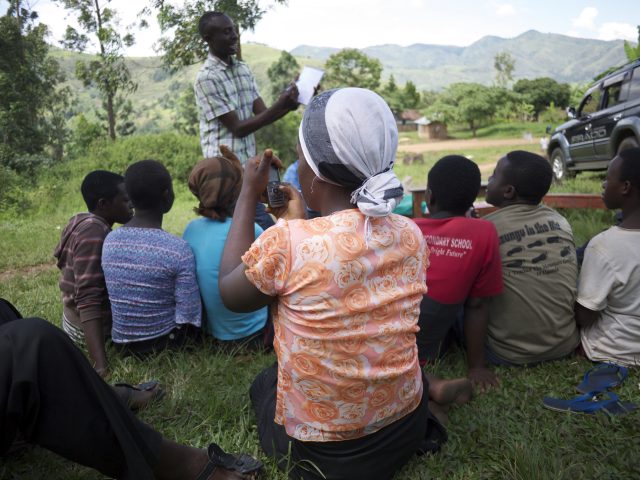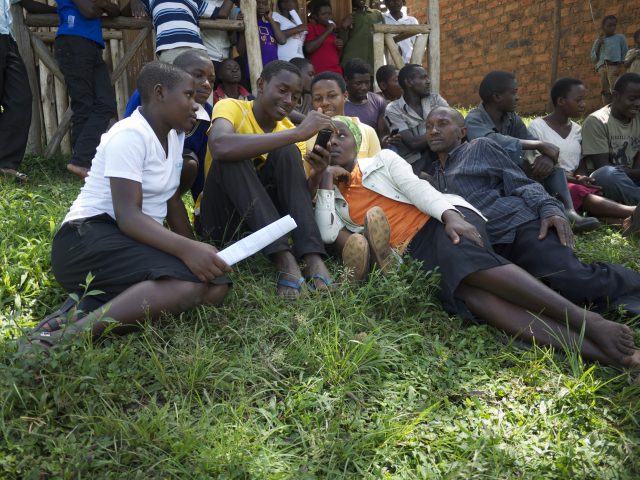When you plant a summer garden, you likely source tips from your local garden center, friends with green thumbs, and of course, Google. But what if farming was your livelihood—making it imperative to have the information needed to succeed—and you didn’t have internet access?
That’s the situation a huge swath of the world’s smallholder farmers find themselves in—and it’s why WeFarm has stepped in to help. WeFarm is a peer-to-peer service that helps these farmers share information with each other via SMS. So they don’t need the internet—they don’t even need to leave their farm! The service is completely free and it allows farmers to ask questions and receive crowd-sourced answers from other farmers around the world!
We interviewed WeFarm CEO and co-founder Kenny Ewan on the origins of WeFarm and where it’s headed next:

Photo credit: WeFarm
So how did the idea for WeFarm come about?
The seeds for me were the many years I spent working in international development abroad. I spent seven years in Latin America based out of Peru, where I worked for an international NGO. While I was there I directed projects across Latin America and designed projects with indigenous communities. A lot of the communities were forming agricultural-based communities and I saw people creating innovative grassroots solutions for common challenges—but you go a couple of miles down the road and people have the same challenges but hadn’t heard of the same ideas or solutions. I started to think of ways of harnessing that.
Then, six years ago, I moved back to the UK and took a job with a new NGO based in London but working across 13 African and Latin America countries. I put my ideas together with a co-founder of the NGO, Claire, and together we designed the first version of WeFarm. I guess originally we saw it as an online platform but then very quickly we built in the idea of having people use it without any access to the internet. That was a key component of granting access to the populations that we wanted to.

Photo credit: WeFarm
You’ve described WeFarm before as the internet for people with no internet. As the idea of universal internet access gains traction will the ideas of WeFarm change as more people gain access to the internet?
Obviously—we’re firstly looking at this in a very crowd-sourced, peer-to-peer, bottom-up way. I think the idea of access to information as a key driver in lifting people out of poverty has been around for a long time, but unfortunately, everyone comes at that from a top-down perspective—this kind of “people just need to be told what to do” idea. There are existing SMS platforms out there, so there are other services that have that starting point. What we wanted to do was tap into people’s existing knowledge: These populations have generations worth of experience to share and we can do something that isn’t as paternalistic as some development and international projects.
I think those core concepts translate whether it is on the internet or not. WeFarm is completely online, although 96 percent of our users only use it through SMS and offline. We’re already ready for people transitioning to the internet – our long-term plan is when people get their first smartphone and can access internet, we graduate them to a place they already trust. WeFarm will be a place with content that’s already been developed from their point of view.

Photo credit: WeFarm
You mentioned the crowd-sourced data and generations of knowledge. Could you expand more on that? Was that an idea in WeFarm’s foundation from the very start?
That was certainly one of the core fundamentals that really cut right from the start with WeFarm. The idea was to take the knowledge and ideas and innovations that people were generating on the farm or in life and give them a platform to share with people next door in their village.
To give you a quick example, I remember in rural Kenya I asked a group of farmers who were selling at a bank center to share things they thought of on a farm that might be innovative or different. This guy brought over a chicken feeder that he designed that he had made out of old buckets—containers he had on the farm. Basically, he said he had a problem at feeding time, where the bigger chicks were trampling the smaller chicks and there was a high mortality rate. So he designed this whole feeder to separate out the feed and he reduced his mortality rate by around 50 percent, which is awesome! I thought thousands of people could be having that problem, but his idea might not travel beyond potentially a couple of neighbors. The whole concept of WeFarm was to take knowledge like this from the ground and be able to share it worldwide.

Photo credit: WeFarm
Earlier this year, ONE campaigned on the idea that investments in nutrition programs can strengthen economies. What is WeFarm’s role in that?
We see our role in that area as strengthening supply chains from the bottom up in two key ways: One is providing information and knowledge to farmers to improve their farms; to battle disease and plant new crops; and be more effective on the farm. Ultimately, that benefits the entire supply chain right up to the multinationals buying these products.
The second thing WeFarm does is to analyze and aggregate the millions of interactions that are happening in the system to be able to provide potentially game-changing information on this whole piece. Obviously, there is a huge part of the world’s population that isn’t using the internet and we don’t have any of that live analytics or data. WeFarm is looking at all the interactions to track disease as it spreads across countries, to be able to isolate drought, or track any kind of trends. That can ultimately help the businesses of these farmers—and the NGO’s and governments that are working with them—to have a much better understanding of what is actually happening, what people’s challenges are, and ultimately to help the world’s supply chain be more robust.

Photo credit: WeFarm
What countries are you in now and where will WeFarm go next?
Currently, we are live in Kenya, which was our first country. More recently, we launched in Uganda and Peru. I think India is our next big target market for fairly obvious reasons: There are 110 million small farmers in India and many with very low internet access. We are also looking at Tanzania and a couple of other countries, but we don’t want to spread ourselves too thin too quickly.
What’s in the future for WeFarm?
We are hoping to be able to close our seed investment round very soon. That investment piece is key for us. We’ve had a very successful first year with more than 70,000 farmers using it now and our retention and usage metrics are through the roof, but we want to take this all to the next level. We want to have a million farmers using it in the next 12 months. We want to potentially launch in a couple of new countries, and really make it a successful venture on a kind of global scale. It’s really helping to improve farmers lives.
